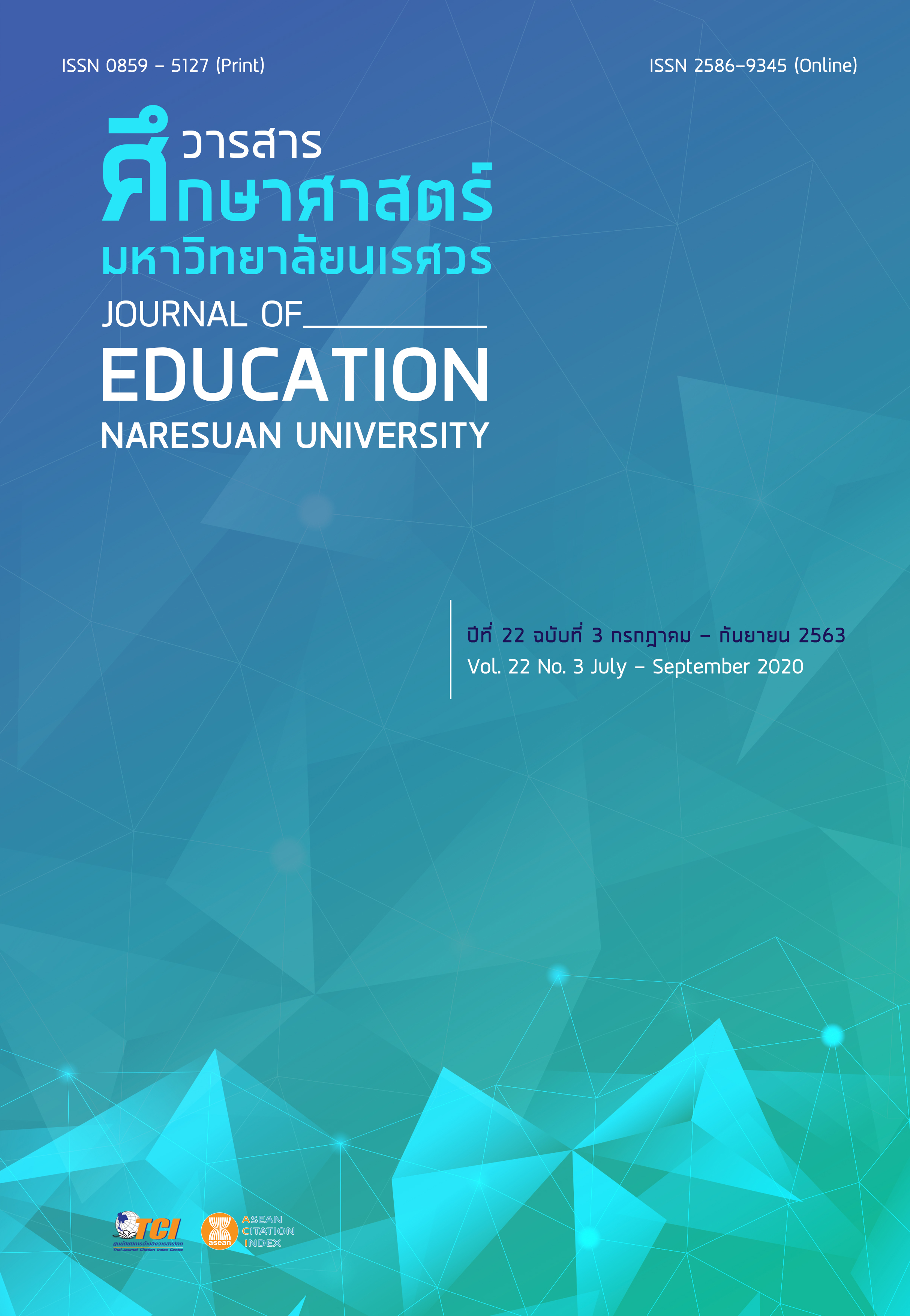THE NEW NORMAL OF A PHYSICAL EDUCATION CLASSROOM MODEL WITH THE COVID-19 REVOLUTION
Main Article Content
Abstract
It is not very often that the world historians have recorded a phenomenon in the same way as the current COVID-19 pandemic. At present, the epidemic of this kind of virus has resulted in several chaos, i.e. economic, society, politic, and lifestyle. This phenomenon leads people and society to the “new normal” lifestyle, which not only the society becomes a fully digitalized system, educational management model is also affected. Many countries start to reconsider technological-based teaching, in which online platform will take a major role for teaching quality in every field of study. It occurs as a slow revolution which teachers need to be aware of in order to be prepared with the new behaviors of the learners. Physical Education subject is held outdoor. It is a subject that learners need to move; and the learners are quite close to each other, so the characteristic of this subject does not follow the social distancing measures. Therefore, after the revolution of this pandemic, it is significant to analyze the how activities of Physical Education will appropriately be in the future.
Article Details
The owner of the article does not copy or violate any of its copyright. If any copyright infringement occurs or prosecution, in any case, the Editorial Board is not involved in all the rights to the owner of the article to be performed.
References
Chan-ocha, P. (2020). Slogan for Teacher’s Day. Bangkok: Teachers’ Council.
Chawauthai, P., & et al., (2019). Effect of outdoor activity on movement co-ordination in 4-6-year-old children. Academic Journal of Thailand National Sports University, 12(1), 51-60.
Debera, S. (2018). HIV Progress in century. Retrieved May 3, 2020, from https://www.cdc.gov/hiv/risk/prep/index.html
Gregg, G. (2017). Types of intersubjectivity and alternative reality image. United States: Meta-Philosophy Research Center.
Hengsukkho, A. (2019). the relationship among mental toughness, sport confidence and stress coping of woodball youth players. Udon Thani: Rajabhat Udonthani University.
Jason, U. (2020). The new behavior. Retrieved May 3, 2020, from
Jonathan, B., Berse, T. & Dutke, S. (2011). Executive functions in learning processes: Do they benefit from physical activity? Educational Research Review. 6. 10.1016/j.edurev.2011.04.002.
Leon, F., Gareth, N., & Matthew, B. (2017). Cambridge IGCSE Physical Education Teacher’s Guide. London: Harper Collins Publishers.
Natalia, N., Igor, G., Mykola, I., Anton, K., & Dariusz, S. (2020). Impact of the wellness program on the quality of life of students. Journal of Physical Education and Sport, 20(2), 929 – 938.
Timothy, M. (2008). Investment Secrets from PIMCO’s Bill Gross. Hoboken, NJ: John Willey & Sons.
Ralph S. P., & I-Min Lee. (1996). Physical activity and fitness for health and longevity. Research Quarterly for Exercise and Sport, 67(3), S-11-S-28, DOI: 10.1080/02701367.1996.10608850
Savagpun, P. (2020). The rhetoric of social inclusion through physical education, sport, and physical activity. Journal of Education Naresuan University, 22(4), 341-350.
Sean Fleming. (2020). Will COVID-19 lead to the global resurgence of other deadly diseases? World Economic Forum. Retrieved from https://www.weforum.org/agenda/2020/04/will-covid-19-lead-to-the-global-resurgence-of-other-deadly-diseases/
Srisawat, N., et. al., (2019). Developing guideline for developing active learning in basketball course. Chonburi: Faculty of Sport Science, Burapha University.
WHO. (2020). Advice for public. Retrieved May 3, 2020, from https://www.who.int/emergencies/diseases/novel-coronavirus-2019/advice-for-public
WHO. (2020). The emergency disease. Retrieved May 3, 2020, from
https://www.who.int/emergencies/diseases/novel-coronavirus-2019
Yuval, N. H. (2015). Homo deus a brief history of tomorrow. London: Harvill Secker.


